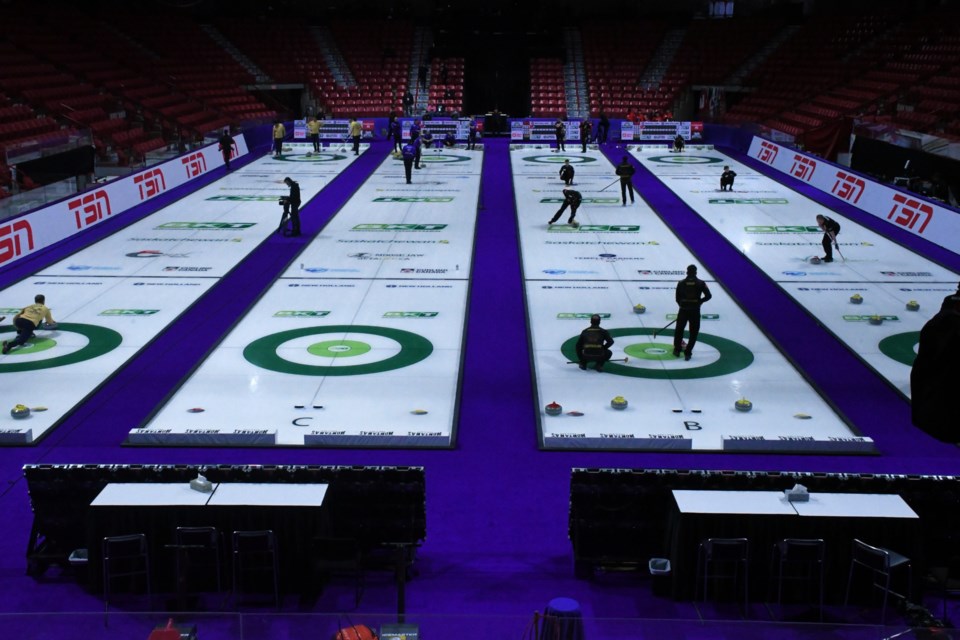MOOSE JAW — The ice surface during the 2025 BKT World Men’s Curling Championship at the Temple Gardens Centre wasn’t a simple utilization of the existing hockey ice, and it certainly didn’t just appear — it was the product of hours of careful preparation, technical skill, and teamwork.
For Chad Hall, a local volunteer assisting the ice technicians, understanding these complexities was an introduction to a whole new world.
“The ice guys did the technical work, and we just helped with the basics — laying down decals, sweeping, and then cleaning up after each game,” Hall explained. His role focused on assisting with ice maintenance and ensuring the surface was in prime condition ahead of each match.
The process to prepare curling ice is far more intricate than it might appear. According to Hall, it begins after the underlying decals have been installed and uses a process called “pebbling.”
Before each game, ice technicians use a specialized scraper to shave the ice surface, removing any bumps or imperfections and making sure the surface is perfectly level. This step is crucial for maintaining the accuracy of stone movement during play.
Once the surface is flat, technicians apply a fine mist of water droplets using a pebble head.
This involves spraying small droplets of water onto the ice surface, which freeze to form ice “beads,” known as “pebbles.” These pebbles create the perfect texture for curling, allowing the stones to glide and “curl” with the right amount of friction.
After the pebble is applied, it’s shaved down slightly with a tool called a nipper — which looks like a blade on a long handle — to create a smooth and even texture by “nipping” or cutting small bits of ice.
“We scraped the ice, pebbled it, then scraped and pebbled it again to build it up,” Hall explained.
Temperature and humidity are also carefully controlled in the rink, with ice kept colder than typical hockey ice — usually around -5 C to -7 C. By comparison, hockey ice is kept around -4 C to -5.5 C, so it’s hard enough to skate on but soft enough to avoid chipping during fast-paced play.
Before each draw, the ice may be re-pebbled or touched up as needed to ensure ideal conditions. There’s a short window of time for this — Hall said his team had around 30 to 45 minutes — but it was a crucial part of the event.
Maintaining this pristine ice surface isn’t just about aesthetics; it’s about ensuring fair play. Curling stones, when pushed across the ice, behave differently depending on the texture of the surface.
Good pebble makes sweeping more effective and ensures consistent play across the sheet. As the pebble wears down, stones may begin to “grab,” “fall,” or slow unexpectedly. A shiny surface or worn tracks are signs the ice needs to be re-pebbled to keep conditions predictable.
Hall’s hands-on role in ice preparation was just one small piece of the puzzle. Throughout the event, he witnessed firsthand the dedication and care that went into making the curling ice flawless.
Behind every successful curling match is a team of volunteers just like Hall, working tirelessly to ensure the ice remains perfect for the athletes.




